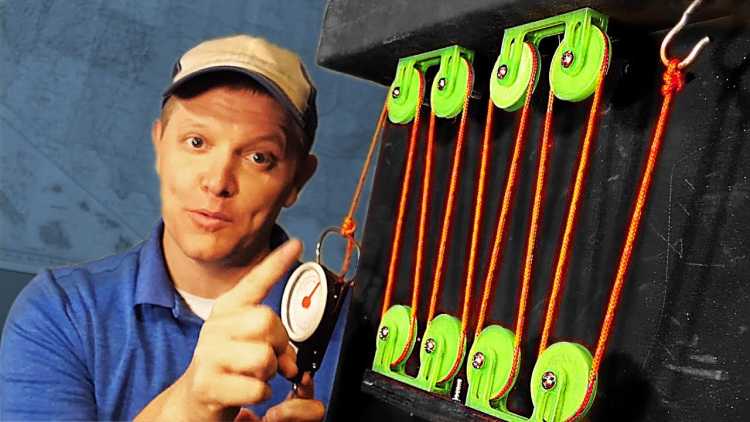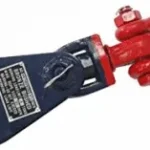How to Use a Winch Pulley Block (2022 Guide)

We may earn a commission for purchases using our links. Learn more
As an off-roader, you have a vehicle designed to handle offroad terrain with grace. But despite this, it may encounter tough spots on the road that require extra help. This is where a winch comes in. Winches are attachments designed to help you or a friend escape a tough situation, including snowy, muddy, or steep and rocky landscapes.
While winches do a great job of saving the day, they aren’t always sufficient or efficient alone. From time to time, you may find yourself stuck in a space without a good anchoring point for the winch. Alternatively, your winch could not have enough power to help get your friend unstuck.
In these situations, self-recovery winch kits come in handy. One of the key tools in these kits is pulley blocks.
Here’s everything you need to know about a winch pulley block and how you can use it efficiently.
What’s a Winch Pulley Block?
Winch pulley blocks are heavy-duty pulleys within a metal casing. The metal casing is easy to open, ensuring you have an easier time wrapping the cable around without needing to thread it in. These pulleys are engineered to bear heavy loads and can redirect lines in self-recovery situations. A pulley block can increase weight capacity by 100 percent when used properly.
Types of a Winch Pulley Block
There are three types of winch pulley blocks, including:
Winch pulley blocks with a hook – these are used in temporary applications
 Winch pulley blocks with a shackle – these are used in permanent and temporary rigging applications
Winch pulley blocks with a shackle – these are used in permanent and temporary rigging applications
 Swing winch pulley block – these are used with vehicle winches
Swing winch pulley block – these are used with vehicle winches
Using a Winch Pulley Block
When used alone, a winch pulley block cannot increase a winch’s weight capacity; instead, it’ll only change the direction. So how does one get it to increase weight capacity? Simple, by wrapping the winch cable around the pulley and attaching it back to the recovery hook attached to the vehicle.
So instead of the winch pulling the vehicle towards the anchoring point, it pulls from the front bumper. The extra pulling power is created by the cable covering half the distance.
With that said, here’s a tutorial on how to use a winch pulley block.
- Safety – before you do anything, you should have your safety and those around you in mind. Winches are built to pull a lot of weight, so exercise caution when using them.
- Get a stable anchoring point – a stable anchoring point can safely withstand the weight of the vehicle you’re winching.
- Wrap tree trunk protectors around your anchoring point – tree trunk protectors, are simply nylon straps with loops on either end. Wrap the protector straps around the anchoring point, ensuring the loops face your direction.
- Attach a D-shackle on the strap ends
- Pull the winch cable – Pull the cable from your winch, ensuring you don’t pull too much. You can switch it to ‘disengage’ or ‘free spool.’
- Wrap the cable around the pulley block – you can open the pully block case by turning a screw on the side. Proceed to wrap the cable around the pulley and then close it.
- Hook the pulley block to the D-shackle that’s attached to your tree trunk protector
- Attach the winch cable to the recovery hook on your vehicle. Find a stable spot on your car’s frame to hook the cable if the vehicle doesn’t have recovery hooks.
- Switch the cable to engage. Doing this will prevent more cable lengths from pulling out.
- Gently drive your vehicle towards the anchoring point while winching.
- Stop winching when you get unstuck and can drive off.
- Unrig your winch after self-recover and unrig the winch.
Some Winch Recommendations
Some winch kits come with solenoids. However, some are difficult to install. One of the best and easy-to-use winch solenoid come with WARN winches. Moreover, these solenoids are affordable. They include:
- WARN 89579 12 Vantage 4000 Contactor
- WARN 62871 Powersports ATV Winch Solenoid
- DB Electrical SMR6005K2 Winch Solenoid for Warn 12 Volt Heavy Duty
Conclusion
And there you have it, a safe process of improving your winch’s pulling capacity by 100 percent. Watch more videos on how creative people can get when using pulley blocks for self-recovery.
I’m Ruiru Kibet, an avid writer and techie that has taken a keen interest in offroading. As I explore nature and troubleshoot with different offroad products and techniques, I’ll share them with you. The goal is dumb it down and help you experience the best of nature.
